Exploring the Top 5 Chinese Dishes and Their Unique Flavors
Chinese cuisine is a vibrant tapestry of flavors, textures, and aromas that captivate food lovers around the world. Among an array of dishes, some stand out as favorites. Let’s explore five top Chinese dishes and the unique flavors that define them.
1. Peking Duck
Peking Duck is a classic dish known for its crispy skin and tender meat. Originating from Beijing, this dish is traditionally served with thin pancakes, hoisin sauce, and sliced vegetables. The preparation involves air-drying the duck and roasting it at high heat, resulting in a savory, flavorful masterpiece. The contrast between the crispy skin and the moist meat makes every bite an exquisite experience. You can savor Peking Duck in renowned restaurants such as Peking Duck House.
2. Kung Pao Chicken
Kung Pao Chicken is a stir-fried dish that brings a delightful mixture of flavors. It includes chicken, peanuts, and chili peppers, all tossed together in a savory sauce made of soy sauce, vinegar, and sugar. The balance of sweet, salty, and spicy makes it a beloved favorite. This dish hails from Sichuan cuisine and is easy to customize based on your spice preference. Pair it with steamed rice for a fulfilling meal!
3. Mapo Tofu
Mapo Tofu is another standout dish originating from Sichuan province. This dish features soft tofu simmered in a spicy, fragrant sauce made with doubanjiang (fermented broad bean paste) and ground pork or beef. Its complex flavors are highlighted by the numbing intensity of Sichuan peppercorns, providing an unforgettable taste. Served often with rice, Mapo Tofu is a must-try for anyone seeking authentic Chinese flavors. For a recipe or tips, the China Sichuan Food website offers valuable insights.
4. Hot Pot
Hot Pot is a communal cooking style where diners simmer fresh ingredients in a pot of boiling broth. It’s perfect for gatherings with family or friends. You can choose from an array of meats, seafood, vegetables, and noodles, making each person’s experience unique. The dipping sauces, such as sesame paste and chili oil, provide added flavors to your meal. There are various styles of hot pot, including Sichuan spicy hot pot and Cantonese broth. To explore different hot pot options, check out Hot Pots.
5. Fried Rice
Fried Rice is a versatile dish that can be made with leftover rice, vegetables, and proteins. What makes Chinese fried rice unique is the use of soy sauce and sesame oil, which enhances its flavor. Common ingredients include peas, carrots, and green onions, but you can add almost anything you have on hand. Fried rice can be served as a side dish or a main course, making it a quick and satisfying meal. For authentic recipes and ideas, visit Serious Eats.
These five dishes represent just a glimpse into the vast world of Chinese cuisine. Each dish provides a unique flavor experience that reflects the rich cultural heritage of China. Whether you prefer the crispy delight of Peking Duck or the comforting warmth of Hot Pot, there’s a dish for everyone to enjoy. Exploring these flavors opens a window to the wonders of Chinese culinary traditions!
For more insights and detailed recipes, feel free to visit culinary destinations such as The Spruce Eats.
The Cultural Significance of Food in Chinese Traditions
The role of food in Chinese traditions extends far beyond mere sustenance; it serves as a vital thread that weaves together cultural identity, social interactions, and familial bonds. Whether during festivals, family gatherings, or daily meals, food carries profound significance in the lives of Chinese people, rich with history and meaning.
One of the most significant aspects of food in Chinese culture is its relationship to familial connections. Meals are often shared among family members, fostering a strong bond and sense of unity. This practice dates back centuries and reflects the deep-rooted belief that the family is the cornerstone of society. Special dishes are prepared during family gatherings to celebrate the bond between generations. For instance, dumplings, known as “jiaozi,” are traditionally made during the Lunar New Year to symbolize wealth and good fortune. The act of preparing and consuming them together creates a memorable experience, reinforcing familial ties.
Food is also integral to the Chinese way of celebrating festivals. Each festival has its own traditional dishes, which hold unique meanings. For example:
- Lantern Festival: Tangyuan (glutinous rice balls) symbolize family reunion and togetherness.
- Mid-Autumn Festival: Mooncakes represent unity and family harmony, often enjoyed while gazing at the moon.
- Dragon Boat Festival: Zongzi (sticky rice wrapped in bamboo leaves) commemorate the ancient poet Qu Yuan and symbolize patriotism.
Such dishes are not merely about flavor; they tell stories of history and heritage, transforming food into a teaching tool for values and beliefs. The preparation and sharing of these dishes help in passing down traditions from one generation to the next, preserving cultural identity in an ever-changing world.
Moreover, the philosophy behind Chinese cuisine, including the principles of yin and yang and the balance of elements, adds layers of meaning to the food culture. Diners are often mindful of nutritional balance, striving for harmony in flavors and ingredients. This consideration is evident in the variety of dishes typically served at a meal, each selected for its taste and health benefits.
Food plays a ceremonial role as well, marking important life events and milestones. In weddings, for instance, specific foods are served to symbolize prosperity and fertility. Fish is a must-have, as its name sounds like “abundance” in Chinese. Similarly, in Chinese funerals, certain dishes are prepared to honor the deceased and to express familial respect, highlighting the respectful view of life and death within the culture.
The growing interest in Chinese cuisine among younger generations further amplifies its cultural significance. As globalization accelerates, many young Chinese are experimenting with traditional recipes, blending old and new concepts. This revitalization of culinary practices ensures that these traditions remain alive and relevant, transforming into contemporary expressions of identity.
Chinese cuisine encompasses a wide array of regional variations, influenced by local ingredients, customs, and cooking techniques. For instance, the spicy flavors of Sichuan cuisine contrast strikingly with the delicate, sweet dishes found in Cantonese cooking. Each region boasts unique food customs that represent their historical influences and local farming practices. Understanding these regional differences offers deeper insight into the collective Chinese culture.
The appreciation for food is further highlighted through art forms like calligraphy and traditional paintings, where food items symbolize abundance and joy, thus illustrating their cultural importance. Additionally, food-related proverbs and idioms enrich the language, embodying cultural values in simple phrases.
As food serves as a bridge connecting individuals to their heritage, festivals, and one another, it undeniably plays a pivotal role in the lineage of Chinese culture. It fosters an appreciation for history while adapting to modern influences, ensuring that the cultural significance of food in Chinese traditions remains alive and thriving. To dive deeper into the topic of Chinese cuisine and its cultural implications, consider visiting China Highlights and Chinese Cuisine. These resources provide valuable insights into the cultural and regional aspects of this rich culinary tradition.
Regional Variations: How Geography Influences Chinese Cuisine
Chinese cuisine is as diverse as the vast geography of China itself. The nation’s landscape, climate, and cultural heritage significantly influence the types of ingredients used in regional dishes and the cooking techniques that develop in those areas. From the spicy flavors of Sichuan to the delicate tastes of Cantonese food, understanding these regional variations provides a unique insight into what makes Chinese food so beloved worldwide.
The Eight Culinary Traditions
Often, Chinese cuisine is classified into eight major regional categories, each with its own distinct characteristics. Here are those regions:
- Shandong: Known for its emphasis on fresh ingredients and seafood, Shandong cuisine features various soups and savory dishes.
- Sichuan: Renowned for bold flavors, especially spiciness, Sichuan cooking incorporates plenty of chili peppers, garlic, and the famous Sichuan peppercorn.
- Cantonese: Recognizable for its dim sum and diverse range of ingredients, Cantonese food often highlights the natural flavors of fresh produce and seafood.
- Jiangsu: This cuisine stands out for its refined cooking techniques and emphasis on aesthetic presentation. Sweet and savory elements are common.
- Hunan: Like Sichuan, Hunan cuisine is spicy but has a more diverse flavor profile, often incorporating smoked and cured meats.
- Zhejiang: Known for its freshness, Zhejiang dishes often come from local water sources, including seafood, and are generally light and aromatic.
- Fujian: Characterized by its use of different textures, Fujian cuisine often includes soup and seafood, focusing on umami flavors.
- Shaanxi: Influenced by its historical trade routes, Shaanxi cuisine highlights the use of wheat, noodles, and bold seasonings.
Climate and Geography as Influential Factors
The geographical features and climate conditions of each region play a crucial role in shaping culinary practices. For example, in the coastal provinces, seafood is abundant, leading to dishes rich in fish and shellfish. Areas closer to mountainous regions tend to utilize hearty ingredients such as root vegetables and meats to cater to a cooler climate.
Components of Regional Cuisines
In addition to climate, other factors like historical trade routes and the availability of resources have inspired the unique components of each regional cuisine:
| Region | Main Ingredients | Flavor Profile |
|---|---|---|
| Shandong | Seafood, grains | Savory, umami |
| Sichuan | Chili peppers, garlic | Spicy, complex |
| Cantonese | Fresh vegetables, light meats | Subtle, sweet |
| Jiangsu | Seafood, seasonal vegetables | Balanced, refined |
| Hunan | Vegetables, smoked meats | Spicy, fragrant |
Culinary Techniques Linked to Geography
Culinary techniques in China are deeply influenced by regional resources. For instance, in regions abundant with rice, steaming is a common cooking method. On the other hand, areas with large cattle farming often utilize grilling and braising techniques to prepare meats. The unique methods not only preserve traditional practices but also heighten the flavor potential based on available ingredients.
Understanding Local Tastes
To appreciate Chinese cuisine fully, one must also consider the cultural context and history behind each dish. The flavors and cooking styles reflect the people’s lifestyles, local customs, and even their agricultural practices. This cultural richness makes trying different Chinese dishes an adventure in itself.
If you’re looking to explore the depth of Chinese cuisine, resources like Chinese Food Blog provide valuable insights into regional dishes, while The Beijinger serves as a guide to eating trends in major cities like Beijing, which highlight influences from various regions.
The regional variations in Chinese cuisine showcase how geography and local resources shape the food we enjoy today. Whether it’s the spiciness of Sichuan dishes or the subtlety of Cantonese flavors, each region has much to offer to those willing to dive into the world of Chinese culinary arts.
The Art of Cooking: Techniques Used in Chinese Dishes
Cooking is not just about following a recipe; it is an art that combines techniques, flavors, and cultural traditions. Chinese cuisine is renowned worldwide for its diverse dishes and unique preparation methods. Understanding the techniques used in Chinese cooking can help you appreciate the flavors that define this incredible cuisine.
The Importance of Wok Cooking
The wok is an essential tool in Chinese cooking. Its design allows for high-heat cooking, which is perfect for stir-frying. This technique involves quickly cooking ingredients over high heat while stirring them frequently. This not only maintains the texture and flavor of the food but also preserves nutrients. Here are some important aspects of wok cooking:
- High Heat: Wok cooking typically occurs at extremely high temperatures, which sears the ingredients quickly, locking in flavors.
- Versatile Use: Woks can be used for various techniques such as frying, steaming, and braising.
- Even Heat Distribution: The round bottom helps distribute heat evenly, essential for cooking ingredients uniformly.
Stir-Frying
This is a popular technique in Chinese cuisine that employs small, evenly cut ingredients. Stir-frying allows flavors to meld while maintaining the fresh characteristics of vegetables. To stir-fry effectively, you’ll need to follow these steps:
- Prepare your ingredients by cutting them into small, consistent pieces for even cooking.
- Heat the wok until it’s smoking hot, then add oil – peanut or sesame oil works best.
- Add aromatics like garlic or ginger first to flavor the oil before introducing your main ingredients.
- Cook ingredients quickly, stirring constantly for best results.
Steaming
Steaming is a healthier cooking method that retains the nutrients in food. In Chinese cuisine, this technique is used to prepare dumplings, fish, and vegetables. Here’s what you need to know about steaming:
- Equipment: Bamboo steamers are traditional, allowing steam to circulate freely.
- Flavor: Ingredients are often flavored before steaming, making them succulent and tasty.
- Moisture Retention: Steaming keeps food moist and tender, providing a distinct texture and taste.
Deep-Frying
Deep-frying is another popular technique, used in dishes such as spring rolls and fried rice. This method creates a crispy outer layer while keeping the inside juicy. Here are the key steps for deep-frying:
- Choose the right oil with a high smoke point, like canola or peanut oil.
- Heat the oil to the proper temperature (around 350-375°F) before adding your food. This ensures a crispy texture.
- Fry in small batches to maintain oil temperature and avoid sogginess in the food.
Braising
Braising combines both dry and wet heat to cook tougher cuts of meat until they are tender and flavorful. It’s a slow-cooking method that allows flavors to develop fully. Here’s how braising works:
- Brown the Meat: Start by searing the meat in a wok to develop a rich flavor before adding liquids.
- Add Aromatics and Liquid: Incorporate spices, soy sauce, and stock to enhance the taste.
- Slow Cook: Cover and cook on low heat for an extended period until the meat is tender.
Chinese cooking is rich with techniques that not only emphasize flavor but also culture and tradition. With practices like stir-frying, steaming, deep-frying, and braising, you can explore the depths of this cuisine in your own kitchen. If you wish to learn more, excellent resources for Chinese cooking techniques include Chowhound and Serious Eats.
Whether you’re trying your hand at a simple stir-fried dish or crafting a complex braised meal, the key lies in mastering these techniques, allowing you to cook like a pro in no time. Enjoy the art of cooking Chinese dishes, and let your culinary journey begin!
Popular Ingredients in Chinese Cooking and Their Health Benefits
Chinese cuisine is renowned for its rich flavors and diversity, showcasing an array of ingredients that not only tantalize the taste buds but also offer a multitude of health benefits. Understanding the popular ingredients used in Chinese cooking can enhance your appreciation for this culinary art while promoting healthier eating habits. Below are some of the key ingredients commonly found in Chinese dishes and their associated health benefits.
Ginger
Ginger is a staple in Chinese cooking, known for its warm and spicy flavor. It is often used in marinades, stir-fries, and soups. Its health benefits are significant:
- Digestive Health: Ginger aids in digestion and can help alleviate nausea.
- Anti-Inflammatory: It contains compounds that have anti-inflammatory properties, making it useful for reducing pain and soreness.
- Immune Support: Ginger boosts the immune system, helping you fend off colds and infections.
Garlic
Garlic is integral to many Chinese dishes, adding depth and aroma. Its health advantages are well-documented:
- Heart Health: Garlic is known to lower blood pressure and improve cholesterol levels, reducing the risk of heart disease.
- Antioxidant Properties: It is rich in antioxidants that help combat oxidative stress in the body.
- Antimicrobial Effects: Garlic has natural antibacterial and antiviral properties, beneficial for overall health.
Soy Sauce
Soy sauce is a fundamental ingredient in Chinese cooking, adding a savory umami flavor. While high in sodium, it also has some health benefits:
- Protein Source: Made from fermented soybeans, it provides a source of plant-based protein.
- Minerals: Soy sauce contains minerals like manganese, which is essential for bone health and metabolism.
- Antioxidants: Less processed soy sauces have antioxidant properties, helping protect against cell damage.
Tofu
Tofu, made from soybeans, is a versatile ingredient in Chinese cooking, commonly used in stir-fries, soups, and salads. Its health benefits include:
- Low in Calories: Tofu is low in calories and a great option for those looking to manage their weight.
- Rich in Protein: It is an excellent source of plant-based protein, ideal for vegetarians and vegans.
- Calcium-Rich: Many types of tofu are fortified with calcium, helping to strengthen bones.
Vegetables
Chinese cuisine emphasizes the use of fresh vegetables. Common choices include bok choy, snow peas, and bell peppers. The health benefits of incorporating vegetables into your diet are vast:
- High in Nutrients: Vegetables provide essential vitamins and minerals that support overall health.
- Fiber-Rich: They are high in fiber, promoting healthy digestion and preventing constipation.
- Low in Calories: Most vegetables are low in calories but high in volume, helping to keep you feeling full without unnecessary calorie intake.
Exploring these popular ingredients in Chinese cooking can inspire you to try new recipes and enhance your meals with not only flavor but also health benefits. By incorporating ginger, garlic, soy sauce, tofu, and a variety of vegetables into your cooking, you can enjoy a delicious and nutritious dining experience.
For more information on Chinese cooking and its health benefits, you can visit China Sichuan Food for traditional recipes and ideas, or The Woks of Life for a modern take on classic dishes.
A Journey Through Chinese Street Food: Must-Try Delicacies
Exploring Chinese street food is a delightful journey filled with vibrant flavors and unique culinary experiences. From bustling night markets to street stalls, the variety of dishes available can be both overwhelming and delightful. Each region of China contributes its own specialties, making Chinese street food an extraordinary blend of tastes and traditions. Here are some must-try delicacies that you shouldn’t miss.
Baozi (Steamed Buns)
Baozi are fluffy steamed buns filled with various ingredients, ranging from pork and veggies to sweet red bean paste. They are perfect for breakfast or a quick snack. The dough is soft, and the fillings are savory or sweet, depending on your preference. Baozi are often served with soy sauce or chili oil, enhancing their flavor.
Jianbing (Chinese Crepes)
This popular breakfast item is a thin, savory crepe made from a mix of wheat and mung bean flour. Vendors prepare jianbing on a flat griddle, adding an egg, scallions, cilantro, and crispy fried dough for texture. The combination is folded expertly and served hot, often with a splash of spicy sauce or hoisin for an added zest. It’s a filling dish that packs a punch of flavor!
Chuanr (Grilled Skewers)
Chuanr are skewered meats that are grilled to perfection, seasoned with cumin, chili powder, and other spices. Popular options include lamb, chicken, and beef. Street vendors often grill chuanr over open flames, providing that irresistible smoky flavor. If you visit a night market, you’ll find these skewers being served up hot, perfect for eating on the go.
Roujiamo (Chinese Hamburger)
Roujiamo is often referred to as the “Chinese hamburger.” It consists of a pillowy bun filled with tender, braised meat, usually pork or beef, along with flavorful seasonings. The meat is slow-cooked to achieve an incredible depth of flavor, making it a beloved street food across China. Each bite is juicy and satisfying, capturing the essence of Chinese culinary traditions.
Tanghulu (Candied Hawthorn Berries)
This sweet treat consists of hawthorn berries coated in a hard sugar syrup. The combination of sweet and sour flavors makes tanghulu a refreshing snack, especially during cold months. Stalls selling this delicacy are often colorful and lively, enticing you to stop and indulge. In recent years, variations of tanghulu have emerged, incorporating strawberries and other fruits.
| Dish | Main Ingredients | Where to Find |
|---|---|---|
| Baozi | Flour, pork or veggies | Breakfast stalls |
| Jianbing | Wheat flour, egg, scallions | Street vendors |
| Chuanr | Lamb or chicken, spices | Night markets |
| Roujiamo | Bun, braised meat | Roadside stalls |
| Tanghulu | Hawthorn berries, sugar | Sweet shops |
To delve deeper into the world of Chinese street food, various resources can be invaluable. Websites like China Highlights provide fantastic insights into local delicacies. You can explore different regions, discover the history of each dish, and find dining tips. If you intend to travel to China, visiting a street food tour can help you experience the real flavors firsthand.
Your adventure through Chinese street food will not only satisfy your taste buds but also give you a glimpse into the culture and daily life of locals. Each dish tells a story, and indulging in these delights is a celebration of the diverse culinary scene that China has to offer. So grab your chopsticks and embark on this flavorful journey!
Vegetarian Options in Chinese Cuisine: Delicious Alternatives
Chinese cuisine offers a diverse array of flavors and textures that can cater to various dietary preferences, including vegetarian options. If you’re looking for delicious alternatives that keep the essence of traditional Chinese dishes while being meat-free, you’re in for a treat. Here are some popular vegetarian dishes that are both satisfying and flavorful.
Mapo Tofu
Mapo Tofu is a beloved dish from Sichuan cuisine that has found a place in vegetarian hearts. This dish features silken tofu cooked in a spicy sauce made from fermented black beans and chili oil. Although traditional versions often include ground pork, vegetarian adaptations use mushrooms or minced tempeh to deliver a hearty texture. The fragrant seasonings and rich flavors make it a perfect dish for spice lovers.
Vegetarian Dumplings
Dumplings are a staple in Chinese culture, and vegetarian versions can be just as delightful as their meaty counterparts. Fillings often include a mix of finely chopped vegetables, mushrooms, and tofu. They can be steamed, boiled, or pan-fried, and are usually served with soy sauce or vinegar for dipping. It’s a dish you can enjoy as an appetizer or main course, making them a versatile addition to any meal.
Common Fillings for Vegetarian Dumplings
- Shiitake mushrooms
- Cabbage
- Carrots
- Scallions
- Tofu
Vegetarian Chow Mein
Chow Mein is a famous noodle dish that offers a fulfilling meal option without meat. This dish typically uses egg noodles tossed in a wok with a variety of vegetables like bell peppers, carrots, and bean sprouts. You can add soy sauce and sesame oil for added flavor. Chow Mein is not only quick to prepare but also easily customizable, allowing you to get creative with seasonal vegetables.
Kung Pao Tofu
Another popular choice is Kung Pao Tofu, which is a vegetarian twist on the classic Kung Pao chicken. In this dish, tofu takes center stage, stir-fried with peanuts, bell peppers, and a zesty sauce made from soy sauce, hoisin sauce, and vinegar. This dish has a satisfying crunch and a bit of heat, making it perfect for those who enjoy robust flavors.
Eggplant in Garlic Sauce
This dish highlights the versatility of eggplant in Chinese cooking. Cooked until tender, the eggplant is stir-fried in a savory garlic sauce, which may include soy sauce, sugar, and chili paste for a hint of heat. The rich flavor pairs well with steamed rice and can serve as a side dish or a main vegetarian attraction.
Tips for Enjoying Vegetarian Chinese Cuisine
- Always inquire about vegetarian options at your favorite restaurants, as chefs often have off-menu specialties.
- Don’t hesitate to ask if they can modify dishes to meet your dietary needs.
- Explore various regional styles of Chinese cuisine, as some regions may have more vegetarian-friendly dishes.
Vegetarian Chinese dishes are not only tasty but also offer a healthier alternative to traditional fare. By opting for these plant-based options, you can explore the richness of Chinese flavors while staying true to your dietary choices. Whether you’re dining out or cooking at home, there’s no shortage of vegetarian delights to enjoy.
For more information about vegetarian options in Chinese cuisine, you can explore resources like China Sichuan Food and The Woks of Life. Both sites offer recipes and insights that can help you dive deeper into the world of vegetarian Chinese cooking.
These vegetarian dishes into your meals allows you to enjoy the best of Chinese culture without compromising your dietary preferences. With a little creativity and the right ingredients, you can savor the delightful flavors of Chinese cuisine in a vegetarian form.
Key Takeaway:
Exploring the culinary landscape of China reveals a vibrant tapestry woven with unique flavors, cultural significance, regional variations, and the art of cooking. The top five Chinese dishes, each with its own distinctive taste and aroma, serve as gateways to understanding this rich cuisine. From the elegantly stir-fried vegetable dishes to the complex flavors of aromatic meats, these dishes represent not just food but a shared history and culture that has evolved over thousands of years.
One key takeaway is the deep cultural significance of food in Chinese traditions. Celebrations, family gatherings, and local festivals often center around food. Dishes are prepared with intention, symbolizing health, prosperity, and togetherness. Understanding the meanings behind each ingredient and dish can enhance your appreciation for not just the flavors but the very essence of Chinese heritage.
Geography plays a pivotal role in shaping Chinese cuisine. From the bold, spicy flavors of Sichuan to the sweeter, milder tastes of Jiangsu, every region offers a unique culinary identity driven by local ingredients and climate. This geographical diversity invites food enthusiasts to explore and experience different flavor profiles across the vast expanse of China.
The art of cooking is another fascinating facet. Chinese culinary techniques, such as stir-frying, steaming, and braising, are not just methods, but forms of expression. Each technique enhances flavors and emphasizes the quality of ingredients, leading to vibrant and nutritious meals.
Additionally, the inclusion of popular ingredients like ginger, garlic, and various vegetables emphasizes health benefits while showcasing essential flavors. Understanding these components can elevate home cooking, allowing you to recreate authentic dishes.
Chinese street food represents another exciting dimension that deserves mention. These must-try delicacies provide a taste of local life, offering authentic flavors that resonate with daily experiences. For vegetarians, Chinese cuisine also offers a plethora of delicious alternatives that are not only satisfying but also healthful.
Engaging with Chinese dishes can provide insights into widely diverse cultures and traditions while also celebrating unique flavors and healthful ingredients. Whether you’re experiencing the cuisine through a restaurant meal or cooking at home, these elements come together to create a rich, flavorful experience worth exploring.
Conclusion
The world of Chinese cuisine invites you to explore a vibrant tapestry of flavors, traditions, and regional variations. Each dish tells a story, reflecting the rich cultural significance of food in Chinese society. From the sizzling sweet and sour pork to the fragrant tofu stir-fries, the culinary landscape offers something for everyone, even those seeking vegetarian delights.
Geography plays a crucial role in this diverse cuisine. Whether it’s the bold spices of Sichuan or the delicate flavors of Cantonese cooking, regional influences shape what’s served at the table. Understanding these variations not only enhances your meal experience but also highlights the local ingredients and techniques used by chefs, which embrace centuries-old traditions.
The art of cooking in China emphasizes precision and passion. Techniques like stir-frying, steaming, and slow-cooking bring out the best flavors and allow the natural essences of ingredients to shine. Speaking of ingredients, many staples found in Chinese cooking offer health benefits, making these dishes not just delicious, but nutritious.
Street food also deserves a special mention. Walking through bustling markets and food stalls, you’ll discover must-try delicacies that provide a taste of authentic Chinese culture. From crispy dumplings to savory pancakes, street food embodies the spirit of communal dining and culinary tradition.
Each bite of Chinese food represents a journey through history, geography, and creativity. As you indulge in these top Chinese dishes, you embrace the essence of a culture that has harmoniously blended flavors and techniques over millennia. Whether you’re dining in a restaurant, exploring street food, or trying your hand at home cooking, each dish opens a doorway to the heart of China.
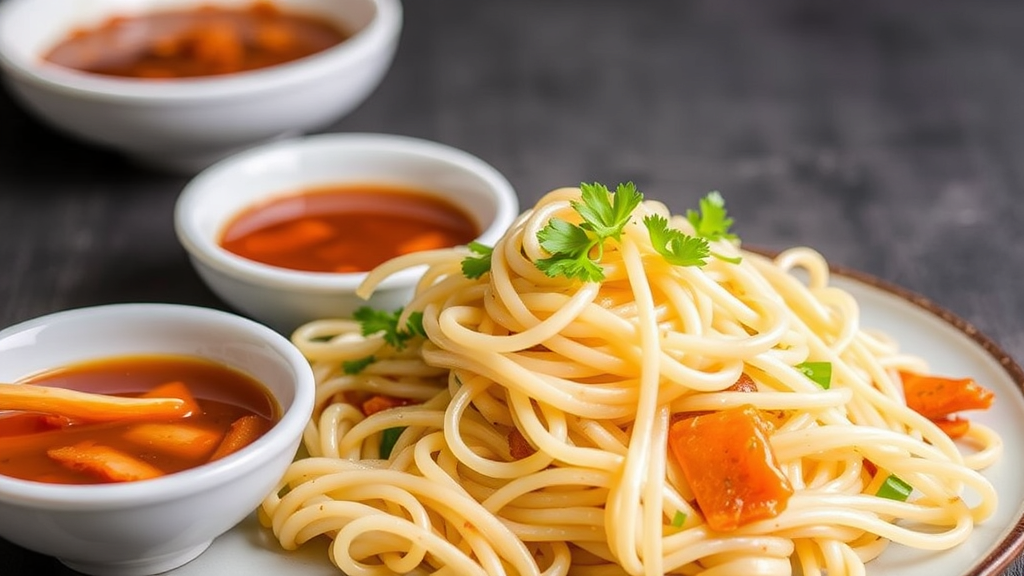

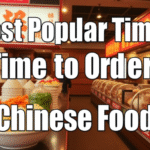

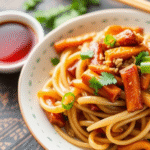
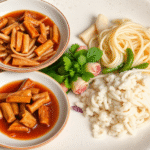
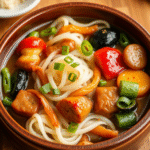
Leave a Reply